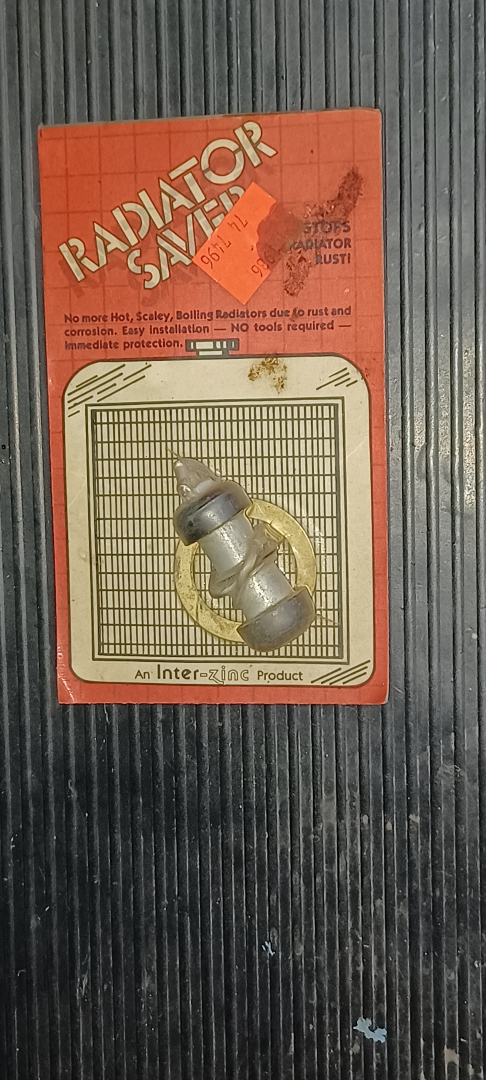- Home
- About Us
- Join/Renew
- Member Benefits
- Member Pages
- Log In
- Help
- Museum Store
Cleaning out another box of my old car parts found this new in-the-pack item. Sacrificial anodes are still widely used in maring applications, but this is the first one I have seen for automotive use. Yes, it likely was a flea market refugee many years ago. For us science geeks ,\\ The chemistry is to use the less noble metal (meaning more active, such as Zinc) than any of the materials in the system to be protected. In our case, the iron and copper of our cooling systems need the protection. Since zinc can even protect aluminum, it works well for the copper and iron of the block and radiator in our cars. Since all water is an electrolyte to some degree, the electrical link between these two elements form the DC circuit between them. The copper is more noble (inert) than the iron, so the iron corrodes and the copper does not. Zinc attached to the radiator neck provides a different circuit and reduces the rate of corrosion in the iron block’s water passages. // end geek
Sure, the new chemical additives today can serve the same function of neutralizing the corrosion reaction between the metals in our cooling system, but before those products came along, a chunk of zinc grounded to the radiator neck worked much better than nothing. Herb
chunk of zinc grounded to the radiator neck worked much better than nothing. Herb
